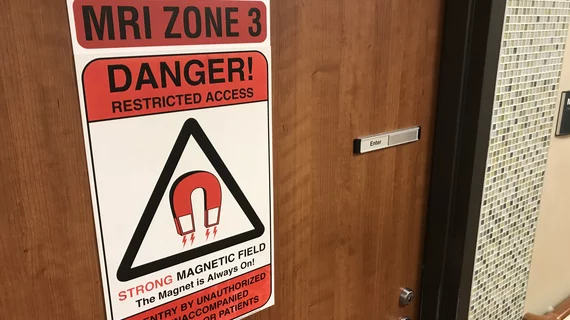FDA issues adverse event report on MRI accident as investigations into its cause continue
Many questions remain unanswered following the release of the U.S. Food and Drug Administration’s adverse event report pertaining to the recent accident that occurred inside an MRI suite at Kaiser Permanente’s Redwood City Medical Center in California.
While many specific details of the incident remain unclear, the report does reveal that the accident occurred on GE MRI equipment—a DISCOVERY MR750 3.0T, manufactured in 2013.
The FDA’s report described the event as follows:
“It was reported that a hospital bed was taken into the scan room when it became attracted to the magnet. A staff member sustained injuries which required medical treatment.”
The description aligns with prior reports speculating that the accident involved a nurse transporting a patient to an MRI suite on a gurney, which was allegedly sucked into the MRI bore, causing the patient to fall off of the stretcher and the nurse to sustain serious injuries. According to those reports, the senior MRI tech on duty during that time was not in the room when the nurse was transporting the patient.
It should be noted that although the adverse event report clarifies that it is not a product problem report, GE Healthcare also is investigating the event. This will include an evaluation of the device in question, according to the report.
In a recent statement to MRI safety expert Tobias Gilk, MRSO, MRSE, senior VP of RAD-Planning and founder of Gilk Radiology Consultants, a representative of the hospital where the MRI accident occurred noted that it was “an isolated occurrence” that prompted an immediate investigation.
“Our teams responded quickly and those involved immediately received the care and support they needed,” the statement reads. “We immediately investigated the root cause and addressed contributing factors, including modifying protocols, changes in equipment, and enhanced monitoring.”
Multiple investigations of the event are ongoing. Updates will be provided as they become available.
The adverse event report is available here.

